AiPrise
7 min read
November 20, 2025
Digital Transformation in Commercial Banking Client Onboarding
.jpeg)
Key Takeaways










In commercial banking, the first impression isn’t made during the first transaction. It begins with client onboarding. For banks, this process is more than paperwork and approvals. It’s the foundation of a long-term relationship and a key revenue trigger.
Yet for many institutions, onboarding remains slow, manual, and fragmented. Such delays not only frustrate clients but also lead to significant revenue leakage. For every day a client is not fully onboarded, banks lose that client’s average daily revenue. When scaled across hundreds or thousands of clients, this inefficiency translates directly into millions in lost profit.
With rising compliance expectations and client demands for speed, commercial banks must rethink their onboarding approach to make it faster, simpler, and more connected across departments.
Let’s begin by understanding the core challenges banks face during the commercial client onboarding process.
Key Takeaways
- Onboarding inefficiencies hurt growth: Long, manual processes delay revenue generation and increase operational costs.
- Client experience directly impacts growth: 49% of banks cite customer experience as their top KPI, yet many lose deals due to operational silos and poor onboarding journeys.
- Digitized onboarding improves efficiency: Banks that adopt digital onboarding solutions can reduce processing time and lower compliance costs.
- A frictionless 5-step approach works best: aligning internal teams, automating workflows, integrating compliance steps, and moving from data collection to approval leads to faster, more consistent client onboarding.
Why Digital Onboarding is Essential in Commercial Banking
The complexity of commercial client relationships makes onboarding especially difficult to manage using manual tools. Traditional systems are slow, error-prone, and often result in redundant work across departments. Meanwhile, the cost of poor onboarding goes far beyond administrative delays; it affects client satisfaction, compliance readiness, and long-term revenue potential.
According to PwC, 73% of financial institutions cite improving customer experience as a top priority, and onboarding is often the first point of friction. Gartner research shows that digitised onboarding can reduce turnaround time by up to 40% while also cutting compliance-related costs.
Digital onboarding enables commercial banks to:
- Automate repetitive data entry, document collection, and verification.
- Conduct real-time AML, KYC, and risk checks.
- Deliver faster approvals and client activation.
- Centralize data across compliance, sales, and credit teams.
It also allows institutions to track onboarding progress, surface delays, and adapt to regulatory changes without costly manual rework.
For commercial banks looking to stay competitive, digital onboarding is not just a tech upgrade—it is a foundational capability for operational efficiency, compliance accuracy, and customer retention.
Common Challenges in Commercial Banking Client Onboarding
Onboarding commercial banking clients involves multiple teams, regulations, and systems. While the goal is clear, to verify and activate clients quickly, the execution is often complex and inefficient.
Here are the key hurdles most institutions face:
So how can banks resolve these issues and create a faster, more seamless onboarding process?
We'll explain the same, but before that, let's have a quick look at how different onboarding methods impact the timeline, cost, and experience for your commercial client.
Suggested read: Why Speed Matters in Customer Onboarding.

5 Steps for Seamless Commercial Banking Client Onboarding
Traditional onboarding relies heavily on manual reviews, multiple document submissions, and disjointed handoffs between teams, all of which increase costs and delay revenue.
In contrast, institutions using full Client Lifecycle Management (CLM) systems report faster onboarding, fewer errors, and a measurable increase in client satisfaction.
Yet, many institutions still rely on slow, siloed, and manual processes that lead to delays, friction, and lost opportunities. To help these institutions, here are five proven steps to build a faster, smarter, and more reliable onboarding journey.
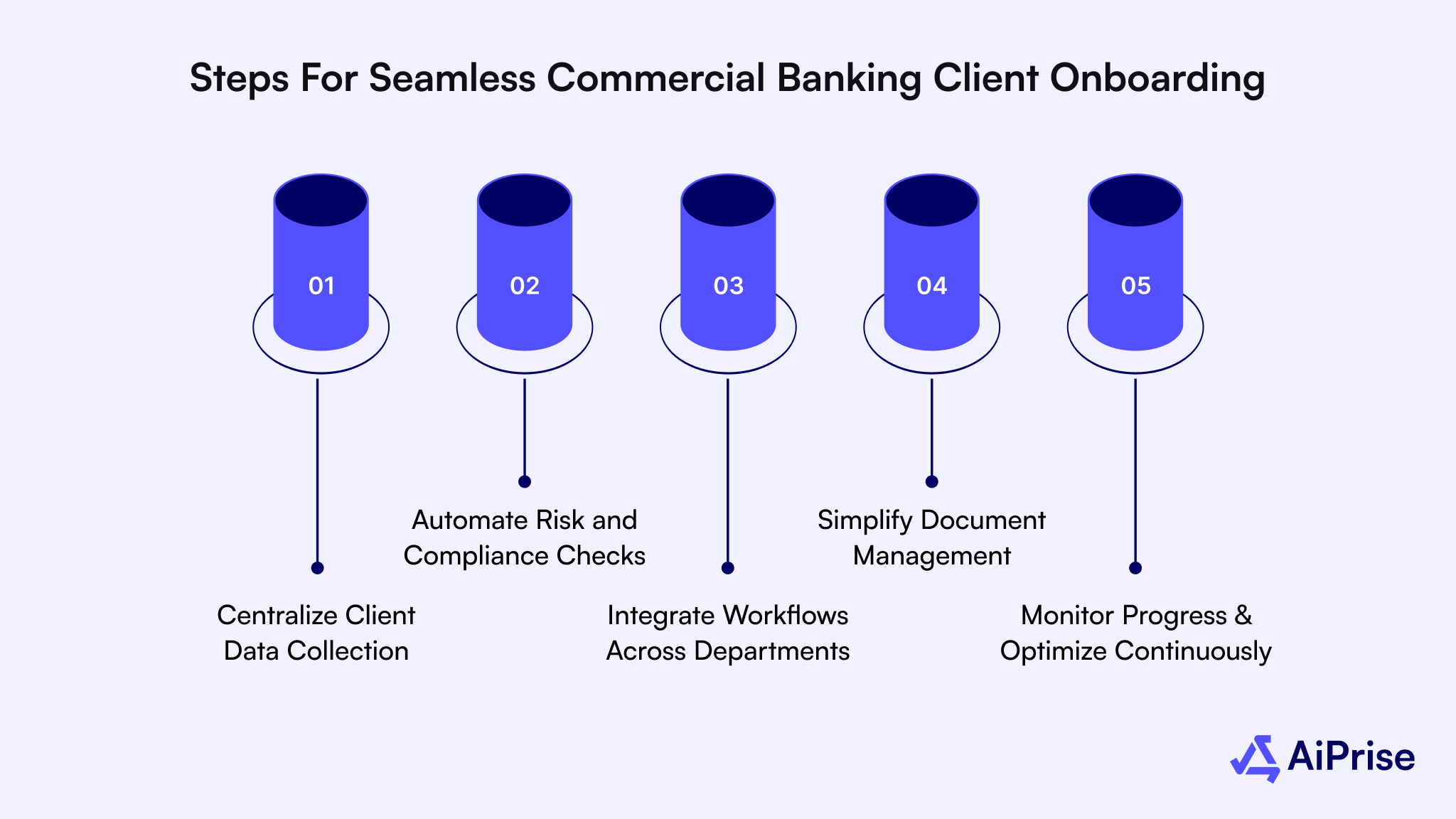
Step 1: Centralize Client Data Collection
One of the biggest bottlenecks in commercial banking client onboarding is scattered data. Sales, compliance, credit, and legal teams often operate in silos, collecting the same information repeatedly. This leads to inefficiencies, duplication, and frustrated clients.
To fix this, start by creating a centralized client profile that consolidates all required data in one place, from identification documents to financial statements and risk indicators.
Key actions in this step:
- Use a single intake form connected to internal systems and external databases.
- Enable real-time data validation to reduce back-and-forth with clients.
- Allow secure uploads and electronic document capture to speed up submissions.
A centralized source of truth ensures teams have access to accurate, updated data at every step. It also eliminates repeated document requests, creating a smoother experience for clients.
Step 2: Automate Risk and Compliance Checks
Once data is collected, it needs to be verified against multiple compliance requirements, including KYC, AML, PEP screening, and sanction lists. Manually conducting these checks not only slows down onboarding but also increases the risk of errors and missed red flags.
Automation helps streamline this critical phase by:
- Screening clients instantly against global watchlists and adverse media.
- Assigning risk scores based on jurisdiction, entity type, and transaction profile.
- Flagging high-risk cases for manual review while fast-tracking low-risk clients.
Automated compliance checks not only cut review times but also improve audit readiness.
Step 3: Integrate Workflows Across Departments
Commercial banking onboarding involves coordination between sales, legal, compliance, operations, and credit teams. When workflows are disconnected, handoffs become inconsistent and tasks fall through the cracks.
To create a frictionless process:
- Implement shared workflow tools with role-based access
- Automate task assignment and deadline tracking
- Provide visibility into case status for all relevant teams
Integrated workflows reduce internal confusion, accelerate decision-making, and ensure accountability at each step.
Smooth collaboration between departments turns onboarding from a bottleneck into a competitive advantage.
Step 4: Simplify Document Management and Validation
Commercial clients are often asked to submit numerous documents during onboarding. This flood of paperwork leads to client fatigue, delays, and missed opportunities.
To streamline this step:
- Use document checklists tailored to client type and risk profile
- Enable digital upload with OCR (Optical Character Recognition) for faster review
- Validate documents automatically for expiration, completeness, and format
With smarter document handling, institutions can drastically reduce the number of client touchpoints. The banking clients are typically contacted multiple times during onboarding, but with streamlined documentation, this number drops significantly.
Less paperwork means happier clients and a faster time to revenue.
Step 5: Monitor Progress and Optimize Continuously
Even with the best systems in place, onboarding processes must be monitored and refined over time. Without visibility into where delays happen, it’s impossible to improve outcomes.
Here’s how to build a feedback loop into your onboarding process:
- Track time taken at each onboarding stage using dashboards and KPIs
- Identify bottlenecks — whether in compliance checks, document review, or approvals
- Gather feedback from onboarding teams and clients to uncover friction points
- Run periodic audits to ensure alignment with internal policies and regulations
Firms that adopt continuous monitoring report faster time to revenue and fewer onboarding drop-offs. This step turns onboarding from a one-time process into a growth engine that improves with every client added.

Also read: AI Powered Strategies for Effective Business Onboarding.
How AiPrise Simplifies Commercial Banking Client Onboarding
AiPrise helps financial institutions reduce onboarding time, eliminate manual friction, and maintain full compliance, all in one platform.
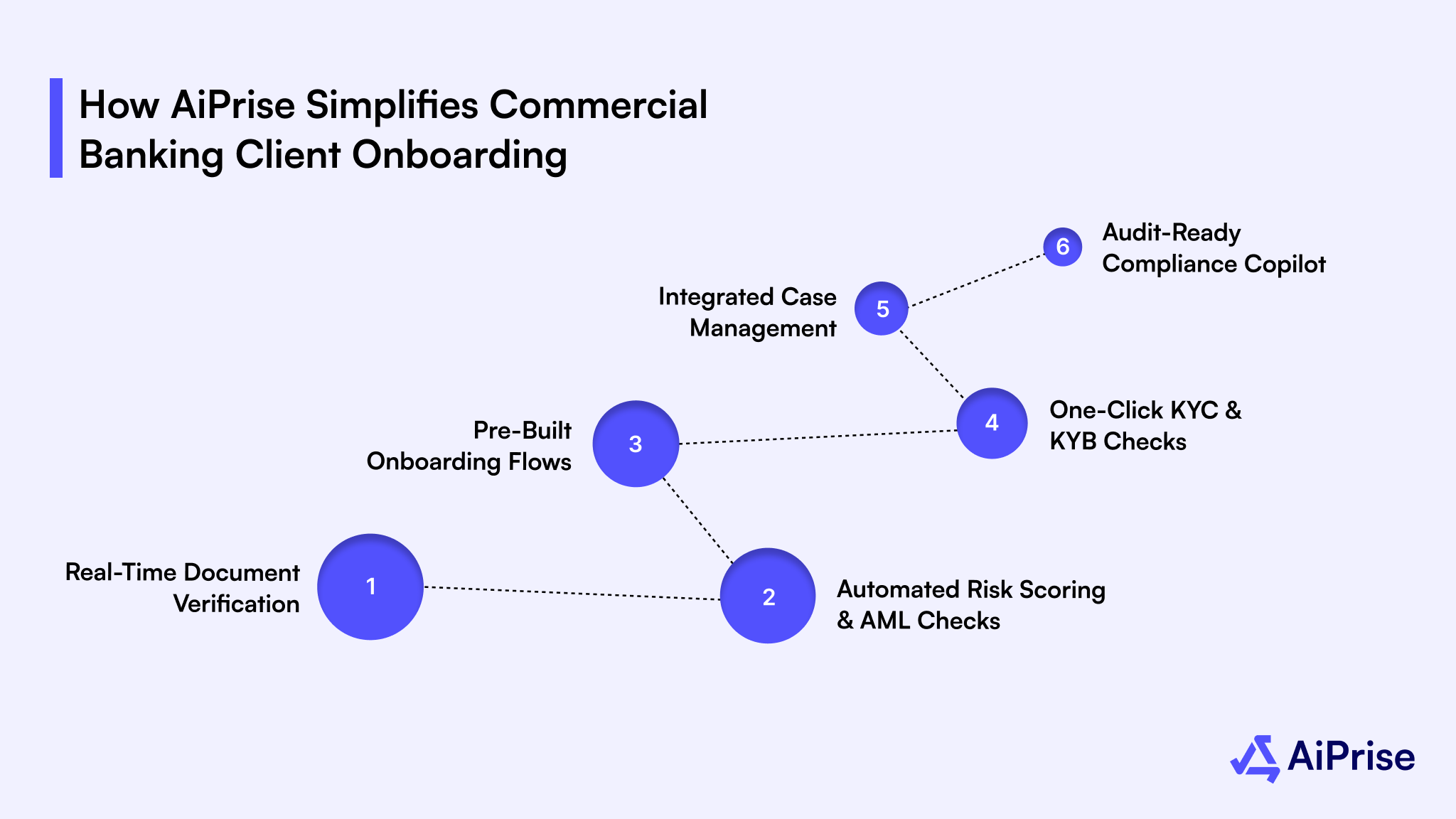
Here’s how AiPrise makes commercial banking client onboarding seamless:
- Real-Time Document Verification
Verify business and personal documents instantly across 220+ countries, reducing the back-and-forth with clients.
- Automated Risk Scoring & AML Checks
AiPrise automatically screens businesses and UBOs against global watchlists and sanctions, which reduces false positives and ensures faster case closure.
- Pre-Built Onboarding Flows
Use configurable workflows to tailor the onboarding journey based on risk level, geography, or client type.
- One-Click KYC & KYB Checks
Pull identity and business verification data from 100+ global sources, all in one click, with audit-ready logs.
- Integrated Case Management
Escalate, investigate, and close onboarding issues from a unified dashboard, eliminating context-switching and duplicate data entry.
- Audit-Ready Compliance Copilot
Let AiPrise’s AI-powered assistant summarize findings, pre-fill fields, and reduce review time by up to 95%.
With AiPrise, commercial banks can shift from fragmented onboarding to a streamlined, intelligence-led experience.
Conclusion
Client onboarding is one of the most critical journeys in commercial banking. Yet, most institutions still struggle to make it fast, seamless, and compliant.
By following these five steps and using intelligent platforms like AiPrise banks can reduce onboarding time, cut costs, and offer a client experience that drives long-term loyalty.
Book a Demo with AiPrise today and see how our onboarding suite transforms commercial banking from day one.
Frequently Asked Questions
Q1. What is commercial banking client onboarding?
A: It refers to the structured process of gathering, verifying, and approving new commercial or institutional banking clients. It includes KYC, AML checks, risk profiling, document collection, and system integration.
Q2. Why is client onboarding so important for commercial banks?
A: A smooth onboarding process directly impacts time-to-revenue, regulatory compliance, and client satisfaction. Delays or inefficiencies can lead to lost deals and reputational damage.
Q3. How long does it typically take to onboard a commercial client?
A: Depending on the level of automation, it can range from 2 weeks to over 100 days. Manual processes often take longer (up to 34 weeks), while digitized platforms can complete onboarding in under 6 weeks.
Q4. What are the biggest challenges in commercial client onboarding?
A: Common hurdles include siloed systems, manual data entry, repeated document requests, and poor data quality. These factors delay onboarding and increase compliance risk.
Q5. How can banks reduce onboarding time and cost?
A: By implementing an end-to-end Client Lifecycle Management (CLM) system, automating workflows, and improving data integration. These approaches can reduce onboarding time and operational costs significantly.
You might want to read these...

Aiprise has helped streamline our KYB (Know Your Business) flow in 100+ countries. No other tool comes close.





Speed Up Your Compliance by 10x
Automate your compliance processes with AiPrise and focus on growing your business.








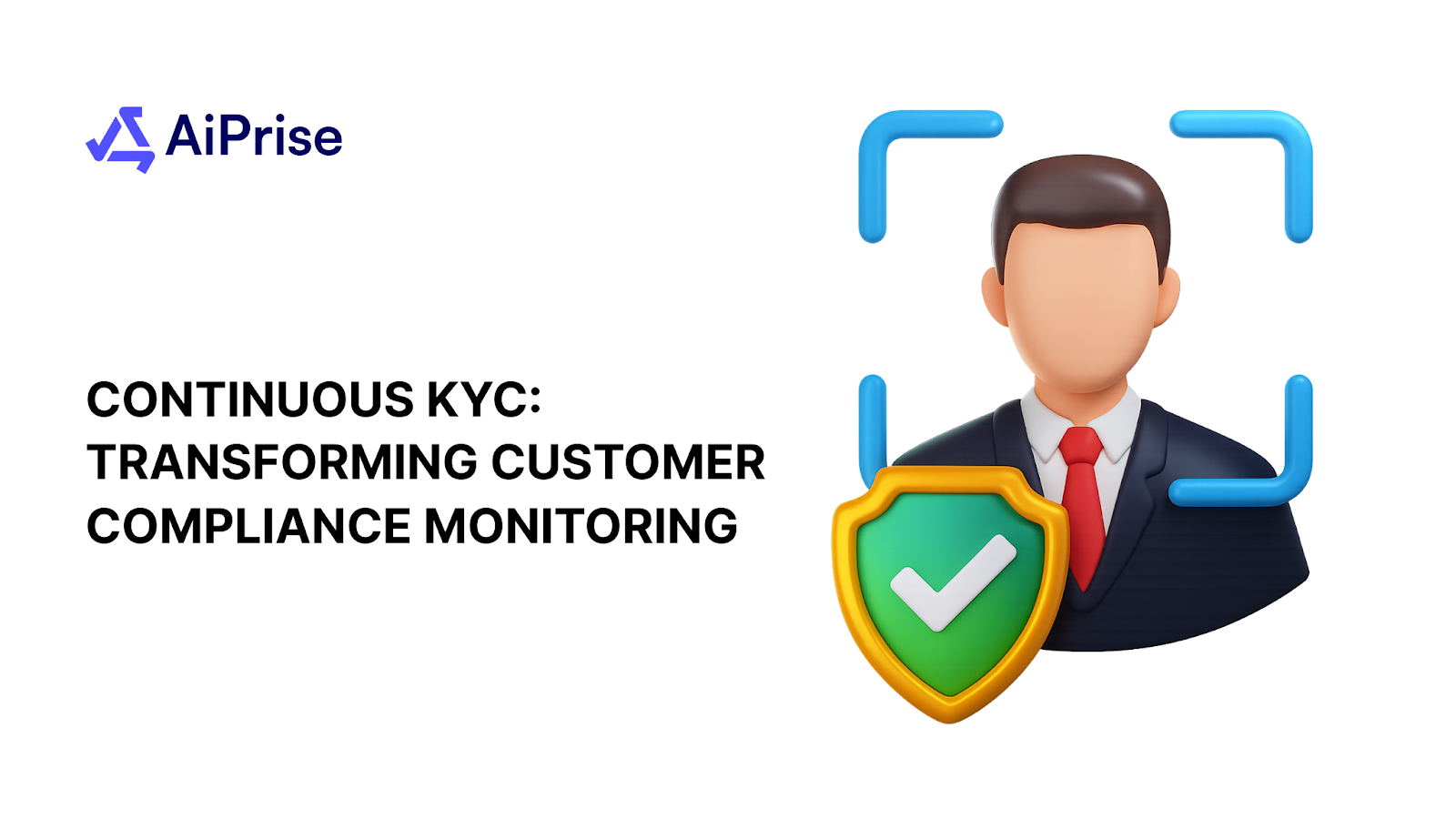
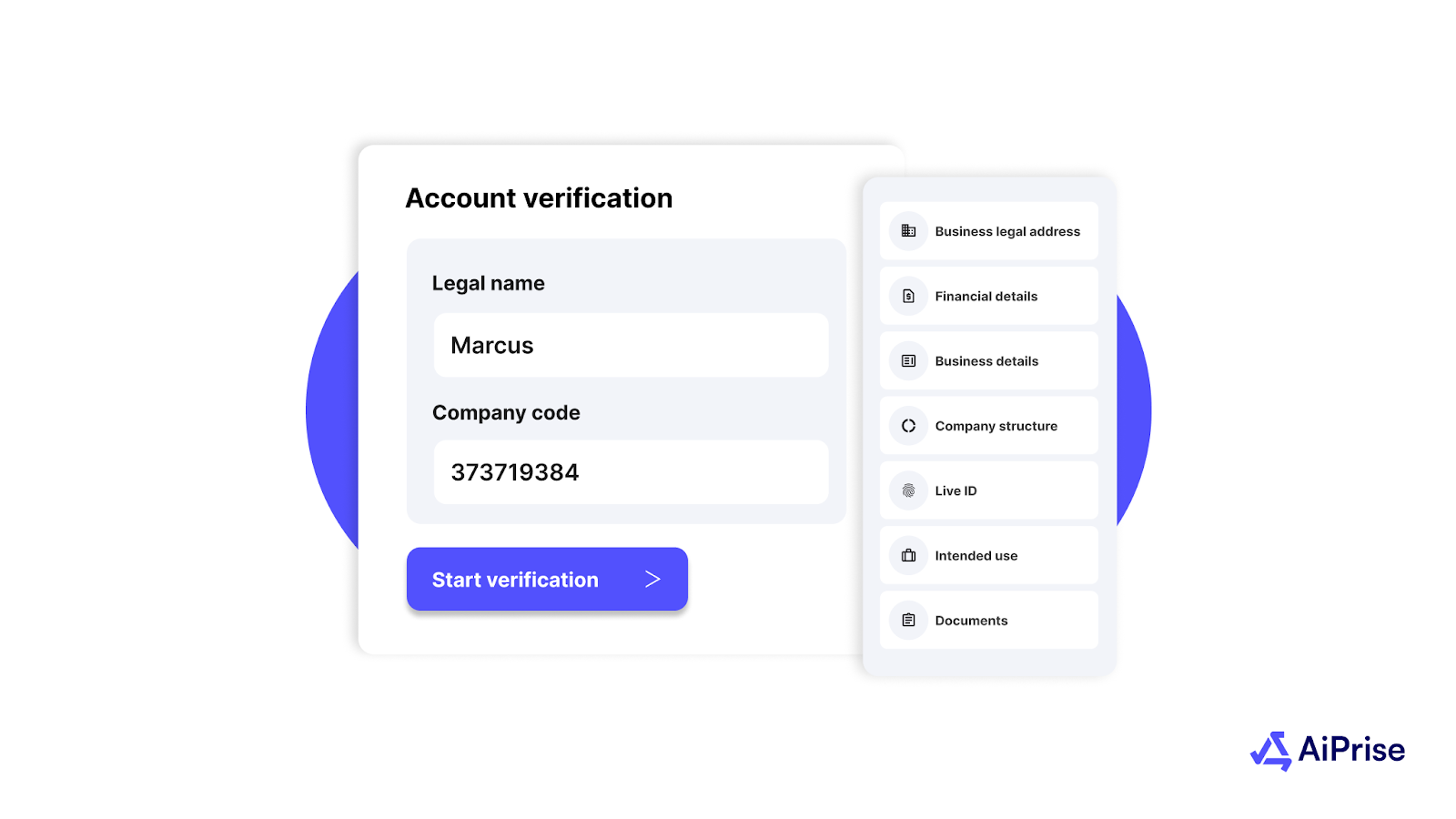
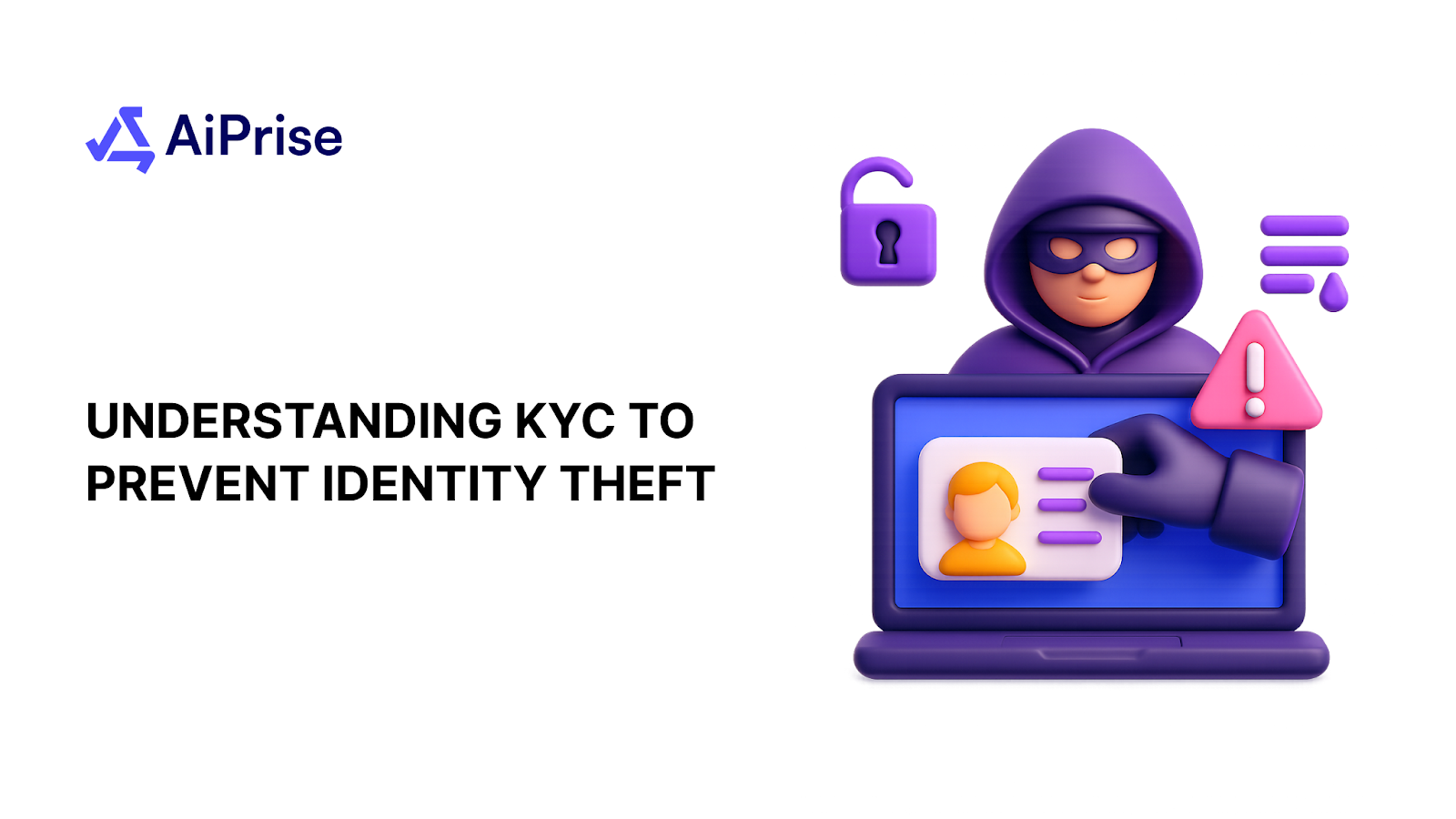


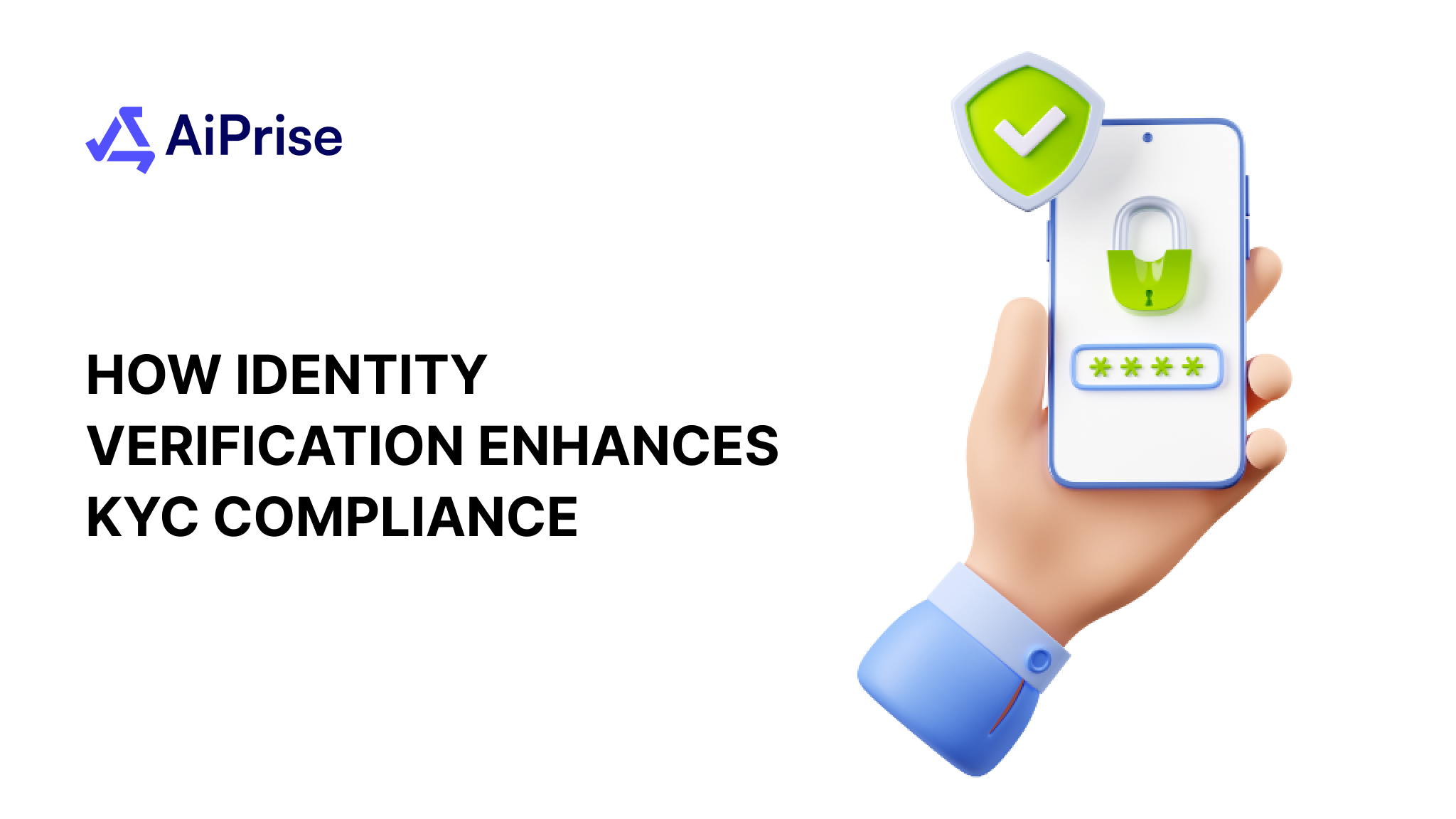

.png)

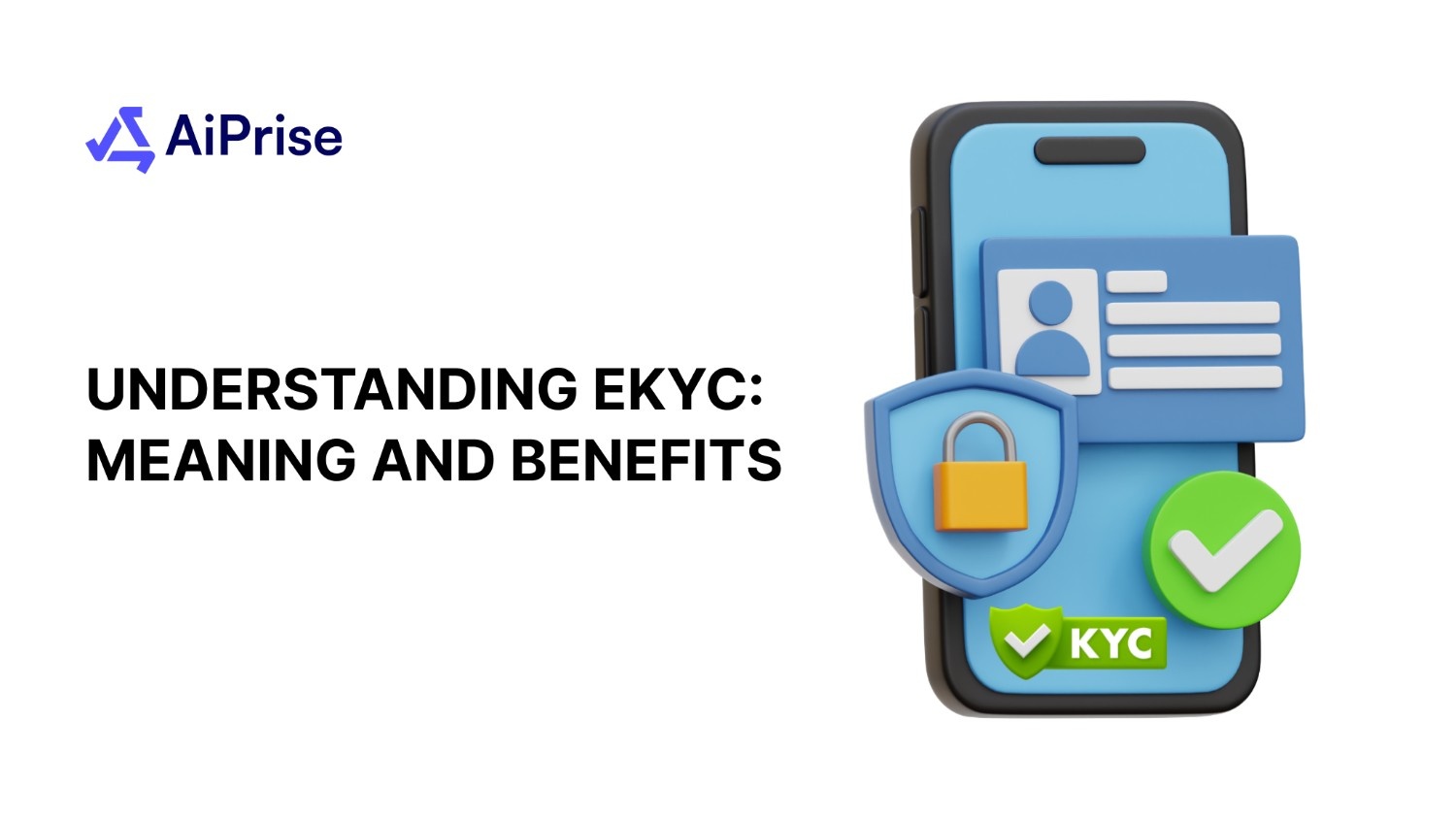


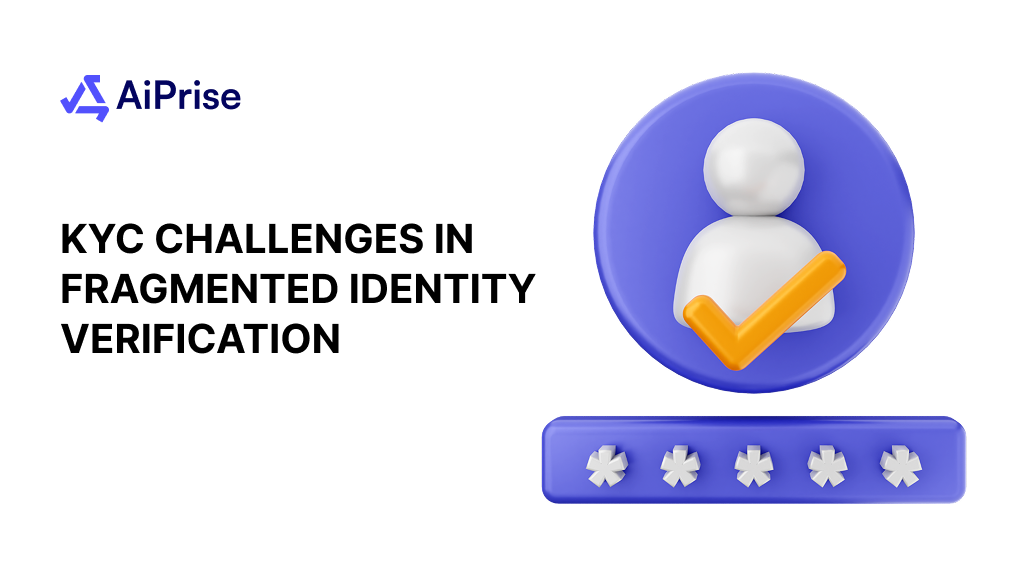









.png)






















